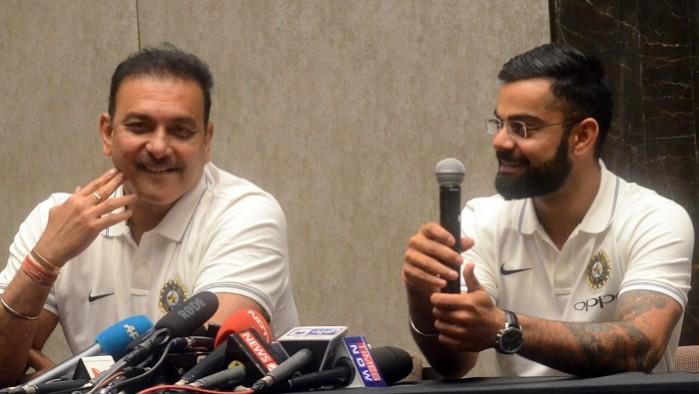For all those who thought that India's position as the best Test team in the world is unquestioned, the tour of New Zealand has proven to be a rude awakening. Having played South Africa and Bangladesh at home and West Indies away, India had an easy beginning to their World Test Championship campaign. Now, they have seen how tough things can be.
But while the 2-0 whitewash in New Zealand can be attributed to a lot of factors, not least the brilliance of a Kiwi team which has been incredibly consistent at home over the years, one must also put the light of scrutiny on the two leaders of the Indian side – Ravi Shastri and Virat Kohli. Their decisions and team selections need to be questioned.

Selection of Pant over Saha
Of all the decisions that Kohli and Shastri took in this series, none warrants as much criticism as the dropping of Wriddhiman Saha and inclusion of Rishabh Pant. What was the thinking behind it? There is only one plausible answer: They thought Pant is more likely to get runs in foreign conditions than Saha.
If that is the case, then the Kohli-Shastri duo deserve all the brickbats coming their way. Yes, Pant has a hundred each in England and Australia. But both those knocks came on utterly flat pitches. When it comes to getting runs in difficult conditions, Saha has more credit in the bank than his junior colleague.

In 2016, when India were struggling against West Indies on a lively pitch and their top order had been blown away, it was Saha who scored a fighting hundred and got his team, along with Ashwin, to a match-winning score. Later in that year, when India faced New Zealand at home in conditions that were seamer-friendly, again, it was Saha who scored fifties in each innings.
Pant is a great option, but on flat wickets. When one is looking for a batsman to dig in and fight it out in difficult conditions, without necessarily looking glamourous, it is Saha who is a much safer bet. And of course, the Bengal keeper's wicketkeeping is way better than Pant, that's why he was picked ahead of the latter in the first place in last year's home winter season.
Why delay picking Jadeja
Another strange bit of selection was picking Ravichandran Ashwin over Ravindra Jadeja in the first Test. When asked about why Jadeja was brought back into the team for the second Test, Kohli said it was because of his batting. However, Jadeja clearly bowled better than Ashwin did in the first Test.

This wasn't the first time in the last many years that Jadeja has replaced Ashwin on a foreign tour and has performed better. It happened on the tour of South Africa in 2013, tour of England in 2018, and even in Australia later that year, though in the last instance it was said that Ashwin got injured.
Now the question is, if Jadeja has consistently proven himself better than Ashwin outside the subcontinent and has also been more productive with the bat in the last year, and is, not to forget, a great fielder, why wasn't he picked ahead of Ashwin for the first Test?
Composition of bowling attack?
Jadeja's good bowling in the first innings of the second Test vindicated the decision to pick him. However, one has to question the logic of picking him. On a pitch as green as the one in Christchurch, wouldn't it have been better to select a fourth seamer?
All these questions are very valid. When one considers that in the past also, there have been selectorial blunders by the duo in charge of the Indian team, like not picking Ajinkya Rahane in South Africa, one has to wonder whether these two men are as good at strategizing as people think?

















